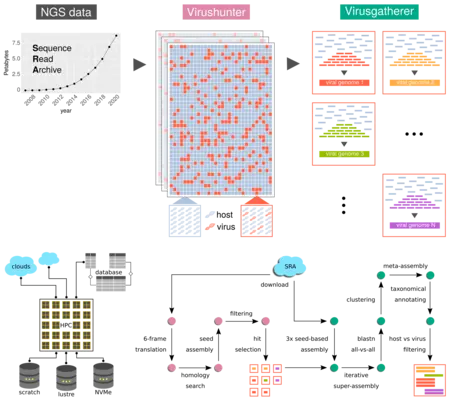Joint Subproject 4
Increasing pandemic preparedness by computational high-throughput virus discovery: Identification of RNA viruses and host reservoirs with high spillover risk
We have a long-standing interest in the discovery and evolution of viruses in general. Our strategy involves two computational pipelines, termed Virushunter and Virusgatherer, dedicated to the identification of NGS experiments positive for the presence of viral sequence reads and the assembly of the corresponding viral genomes, respectively.

In the proposed project, we will now use these data in order to contribute both to sustainable strategies towards preparedness for future Emerging Infective Diseases (EIDs) and pandemics and to better understand and control the current pandemic caused by SARS-CoV-2. Regarding future EID preparedness, we will derive, validate and apply a spillover and pandemic risk score to identify RNA viruses with highest zoonosis probability. Regarding control of the current pandemic, we will compile an ACE2 receptor sequence catalogue to identify potential animal reservoirs of SARS-CoV-2 in particular and any viral EIDs in general. We will further study the possible cross-interference between SARS-CoV-2 and other respiratory viruses and ubiquitous persistent viruses.




